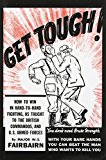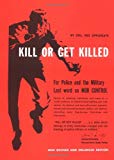<[email protected]>
http://www.bradapp.net/
- Index: (next chapter)
- Working Toward the Splits: (previous chapter)
According to Kurz, the following tables indicates the normal ranges of joint motion for various parts of the body:
- Lumbar Spine: (next section)
- Normal Ranges of Joint Motion: (beginning of chapter)
- Flexion: 70-90 degrees
- Touch sternum with chin.
- Extension: 55 degrees
- Try to point up with chin.
- Lateral bending: 35 degrees
- Bring ear close to shoulder.
- Rotation: 70 degrees left & right
- Turn head to the left, then right.
- Shoulder: (next section)
- Neck: (previous section)
- Normal Ranges of Joint Motion: (beginning of chapter)
- Flexion: 75 degrees
- Bend forward at the waist.
- Extension: 30 degrees
- Bend backward.
- Lateral bending: 35 degrees
- Bend to the side.
- Elbow: (next section)
- Lumbar Spine: (previous section)
- Normal Ranges of Joint Motion: (beginning of chapter)
- Abduction: 180 degrees
- Bring arm up sideways.
- Adduction: 45 degrees
- Bring arm toward the midline of the body.
- Horizontal extension: 45 degrees
- Swing arm horizontally backward.
- Horizontal flexion: 130 degrees
- Swing arm horizontally forward.
- Vertical extension: 60 degrees
- Raise arm straight backward.
- Vertical flexion: 180 degrees
- Raise arm straight forward.
- Wrist: (next section)
- Shoulder: (previous section)
- Normal Ranges of Joint Motion: (beginning of chapter)
- Flexion: 150 degrees
- Bring lower arm to the biceps
- Extension: 180 degrees
- Straighten out lower arm.
- Supination: 90 degrees
- Turn lower arm so palm of hand faces up.
- Pronation: 90 degrees
- Turn lower arm so palm faces down.
- Hip: (next section)
- Elbow: (previous section)
- Normal Ranges of Joint Motion: (beginning of chapter)
- Flexion: 80-90 degrees
- Bend wrist so palm nears lower arm.
- Extension: 70 degrees
- Bend wrist in opposite direction.
- Radial deviation: 20 degrees
- Bend wrist so thumb nears radius.
- Ulnar deviation: 30-50 degrees
- Bend wrist so pinky finger nears ulna.
- Knee: (next section)
- Wrist: (previous section)
- Normal Ranges of Joint Motion: (beginning of chapter)
- Flexion: 110-130 degrees
- Flex knee and bring thigh close to abdomen.
- Extension: 30 degrees
- Move thigh backward without moving the pelvis.
- Abduction: 45-50 degrees
- Swing thigh away from midline.
- Adduction: 20-30 degrees
- Bring thigh toward and across midline.
- Internal rotation: 40 degrees
- Flex knee and swing lower leg away from midline.
- External rotation: 45 degrees
- Flex knee and swing lower leg toward midline.
- Ankle: (next section)
- Hip: (previous section)
- Normal Ranges of Joint Motion: (beginning of chapter)
- Flexion: 130 degrees
- Touch calf to hamstring.
- Extension: 15 degrees
- Straighten out knee as much as possible.
- Internal rotation: 10 degrees
- Twist lower leg toward midline.
Ankle
- Knee: (previous section)
- Normal Ranges of Joint Motion: (beginning of chapter)
- Flexion: 45 degrees
- Bend ankle so toes point up.
- Extension: 20 degrees
- Bend ankle so toes point down.
- Pronation: 30 degrees
- Turn foot so the sole faces in.
- Supination: 20 degrees
- Turn foot so the sole faces out.
Go to the , chapter.
- Brad Appleton<[email protected]>
http://www.bradapp.net/
Don’t miss the Martial Arts section of the Military Equipment Guide.



